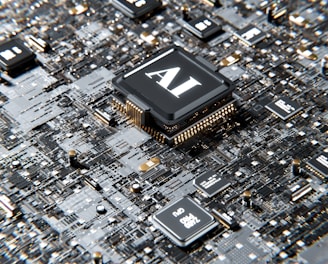Introducing AI in the NHS: Revolutionising Healthcare with Real-World Applications


Professional GP advice, anytime, anywhere
Imagine a future where your wait for specialist appointments is slashed, diagnoses arrive with pinpoint accuracy in minutes, and healthcare staff are empowered by intelligent assistants. Welcome to the age of AI in the NHS, where cutting-edge technologies are reshaping every corner of patient care. From streamlining administrative tasks to accelerating research breakthroughs, AI is poised to transform the way we receive and deliver healthcare.
A New Era: NHS AI Lab
In 2019, the UK government made a ground-breaking commitment by investing hundreds of millions of pounds to establish the NHS AI Lab. This dedicated hub brings together clinicians, data scientists, and innovators to accelerate the safe, ethical, and effective adoption of AI across the service. By coordinating development, testing, and deployment, the AI Lab ensures that promising technologies move swiftly from pilot to practice.
Building the Foundation: Knowledge and Governance
Responsible AI use at scale demands clear guidance and robust governance. The NHS AI Lab has assembled an extensive knowledge repository filled with best-practice guidance, ethical frameworks, and real-world case studies. These resources help NHS teams navigate the complexities of procurement, data privacy, patient consent, and regulatory compliance — paving the way for AI solutions that are as trustworthy as they are powerful.
Putting AI into Practice: Real-World Use Cases
1. Automated Radiology and Diagnostic Support
Deep-learning algorithms are already autonomously triaging chest X-rays in NHS Trusts, identifying scans that are “high-confidence normal” and flagging only those needing expert review. This not only speeds up diagnosis but also frees radiologists to focus on the most complex cases. In dermatology, AI-driven skin analytics are accelerating referrals for suspicious lesions, ensuring faster treatment for patients at risk.
2. Robotic Assistance on the Horizon
AI-powered surgical robots have demonstrated the ability to perform intricate steps with exceptional precision, marking a major step toward autonomous soft-tissue surgery. Over the next decade, the NHS aims to integrate robotic assistance into the vast majority of keyhole procedures—offering patients less invasive operations, shorter recovery times, and better outcomes.
3. AI-Powered Triage and Virtual Assistants
Symptom-checking tools embedded in NHS 111 Online are piloting AI models that guide patients to the right level of care—whether self-management at home, community services, or emergency departments. Early trials show significant reductions in unnecessary A&E visits. Complementing this, machine-learning platforms are proactively flagging high-risk patients for follow-up, helping to prevent crises before they occur.
4. Predictive Analytics for Preventative Care
Home-care providers are using AI analytics to predict health risks days in advance — triggering early interventions that cut hospitalisations by up to 70% and reduce patient falls by 20%. Daily risk alerts empower carers to act swiftly, averting emergencies and improving quality of life, while delivering substantial savings for the NHS.
5. Capacity Planning in a Crisis
During the COVID-19 pandemic, machine-learning systems forecasted hospital bed and ICU demands in real time by integrating multiple data sources. These tools became critical for regional decision-making, demonstrating how AI can bolster system resilience under extreme pressure and guide resource allocation when lives depend on it.
The Future of Healthcare: Beyond the NHS
As we look beyond the borders of the NHS, a global revolution in medicine is already underway—one powered by AI’s ability to learn, predict, and personalize like never before. Here’s how tomorrow’s innovations are shaping healthcare worldwide:
1. Smart Wearables: Your Health on Your Wrist
Continuous Monitoring: Devices like smartwatches and patches now capture heart rate variability, oxygen saturation, and even electrocardiograms (ECGs) every second of the day. AI algorithms sift through this ocean of data to spot early warning signs—such as the subtle rhythm changes that precede atrial fibrillation—often days before symptoms emerge.
Early Intervention: Imagine your watch alerting you to an oncoming arrhythmia or fatigue-related risk, prompting a gentle nudge: “Take a breather, hydrate, and consider a quick ECG.” By catching issues pre-emptively, these wearables promise to shift care from reactive emergency visits to proactive, everyday wellness.
2. Genomics-Driven Precision Medicine: Treatment at the Molecular Scale
Decoding DNA: Advances in sequencing technology have made whole-genome data affordable and ubiquitous. AI tools now interpret millions of genetic variants in minutes, predicting which mutations drive cancer in a specific patient or which drug combinations will be most effective—and least toxic.
Personalized Protocols: No two tumours are identical. With AI-powered genomic profiling, oncologists can tailor chemotherapy regimens to target the unique genetic fingerprint of each patient’s cancer, dramatically improving response rates and reducing side effects.
3. Virtual Therapists and Chatbots: 24/7 Mental Health Support
On-Demand Conversations: Platforms like Woebot and Wysa use natural language processing to carry empathetic, evidence-based dialogues with users—offering cognitive behavioural techniques, mood tracking, and crisis triage at any hour.
Bridging the Gap: In regions with few mental health professionals, AI chatbots provide a lifeline, guiding users toward coping strategies, and flagging high-risk cases to human therapists for follow-up. This hybrid model scales support without sacrificing safety or compassion.
4. Augmented Reality (AR) in Surgery: Real-Time Guidance
Immersive Overlays: Surgeons wearing AR headsets can project 3D reconstructions of patient anatomy directly onto their field of view. Blood vessels, tumours, and critical structures are color-coded and precisely aligned to the operating table, turning each incision into a guided procedure.
Enhanced Precision: Early studies show AR-assisted surgeons make fewer deviations from planned trajectories and finish complex minimally invasive procedures faster—reducing anaesthesia time and improving recovery.
5. AI-Driven Drug Discovery: Accelerating Breakthroughs
Virtual Screening: Traditional drug development can take over a decade and billions of dollars. AI-based models now simulate how millions of chemical compounds interact with biological targets in silico—identifying promising candidates in weeks, not years.
Repurposing Existing Drugs: By analysing vast clinical data, machine learning can uncover unexpected therapeutic uses for approved drugs, fast-tracking treatments for emerging diseases or rare conditions.
Conclusion: Your Role in the AI Revolution
The journey has just begun, and every one of us—patients, clinicians, and innovators—has a part to play. How would you like AI to shape your next healthcare experience? Share your thoughts, get involved in local pilots, or simply stay curious. Together, we can ensure that AI delivers on its promise: safer, faster, and more compassionate care for all.


